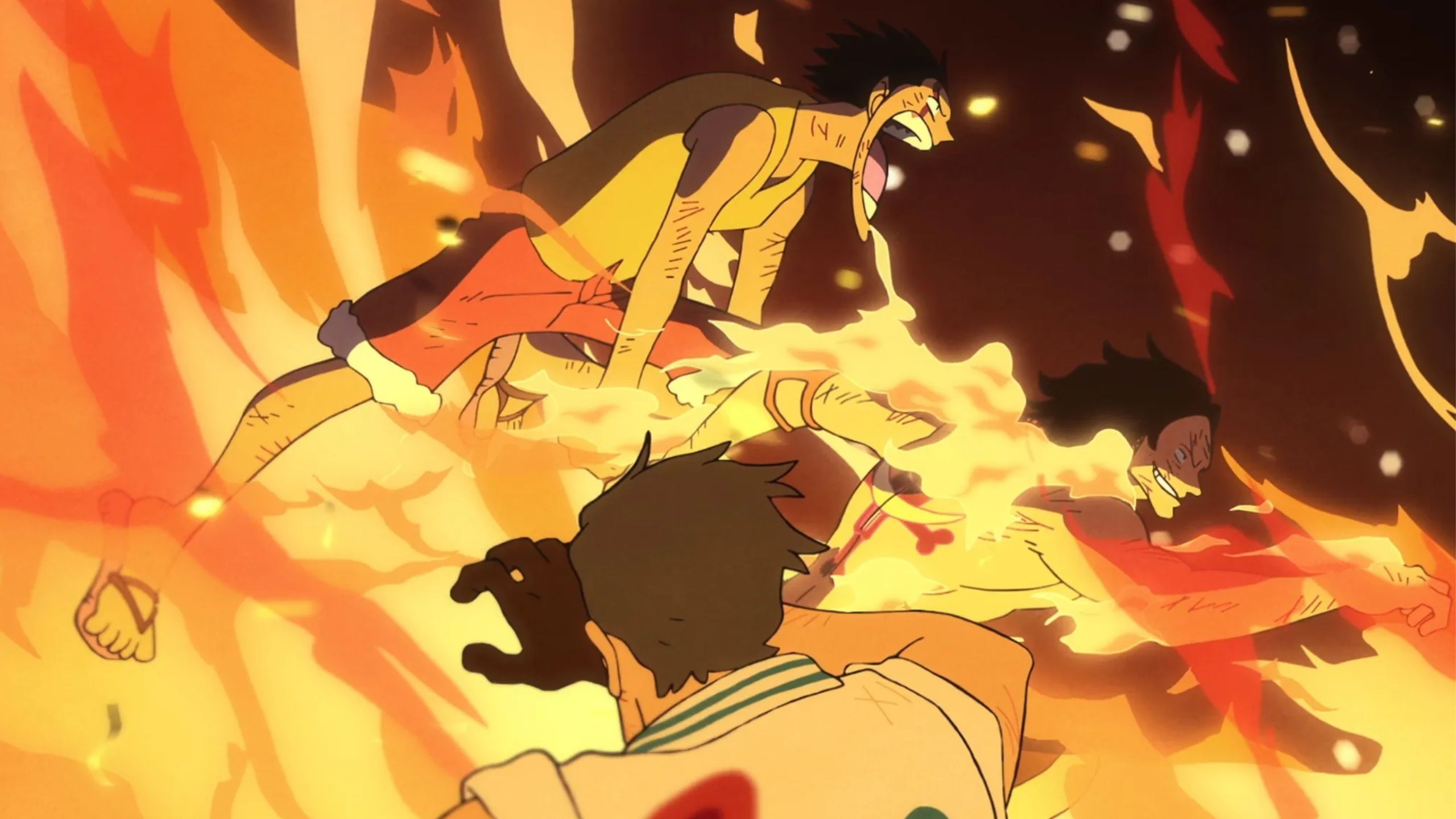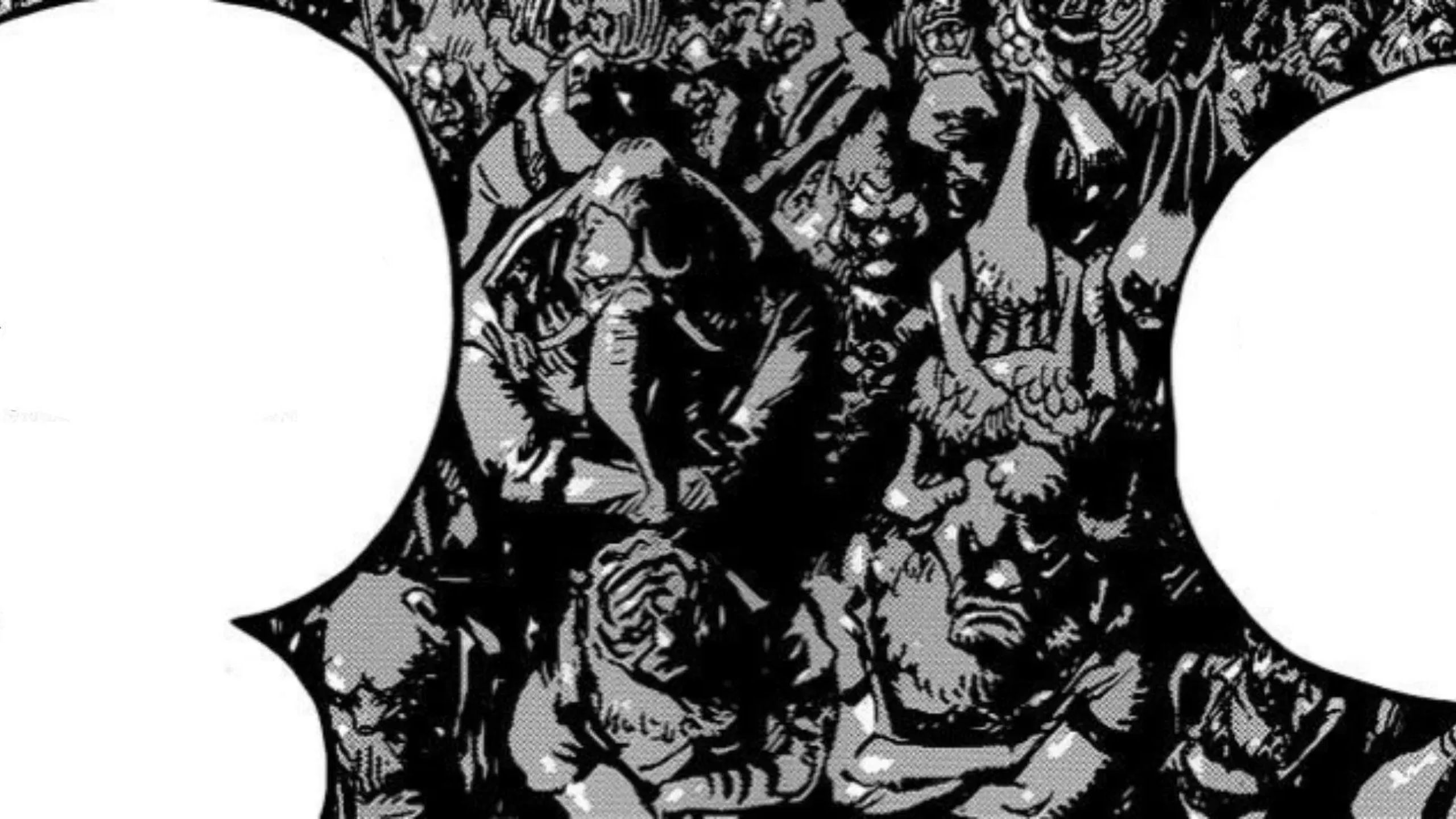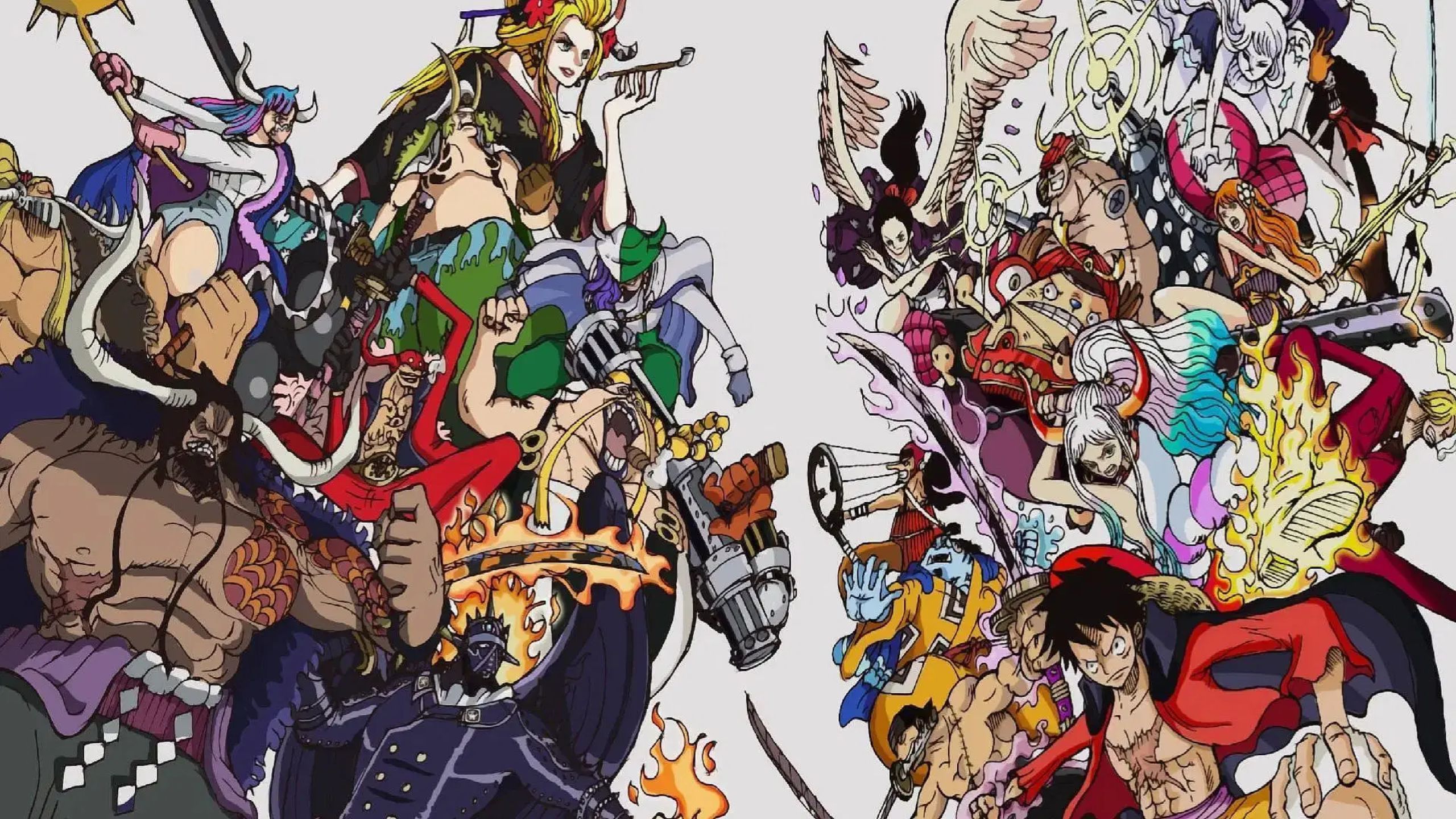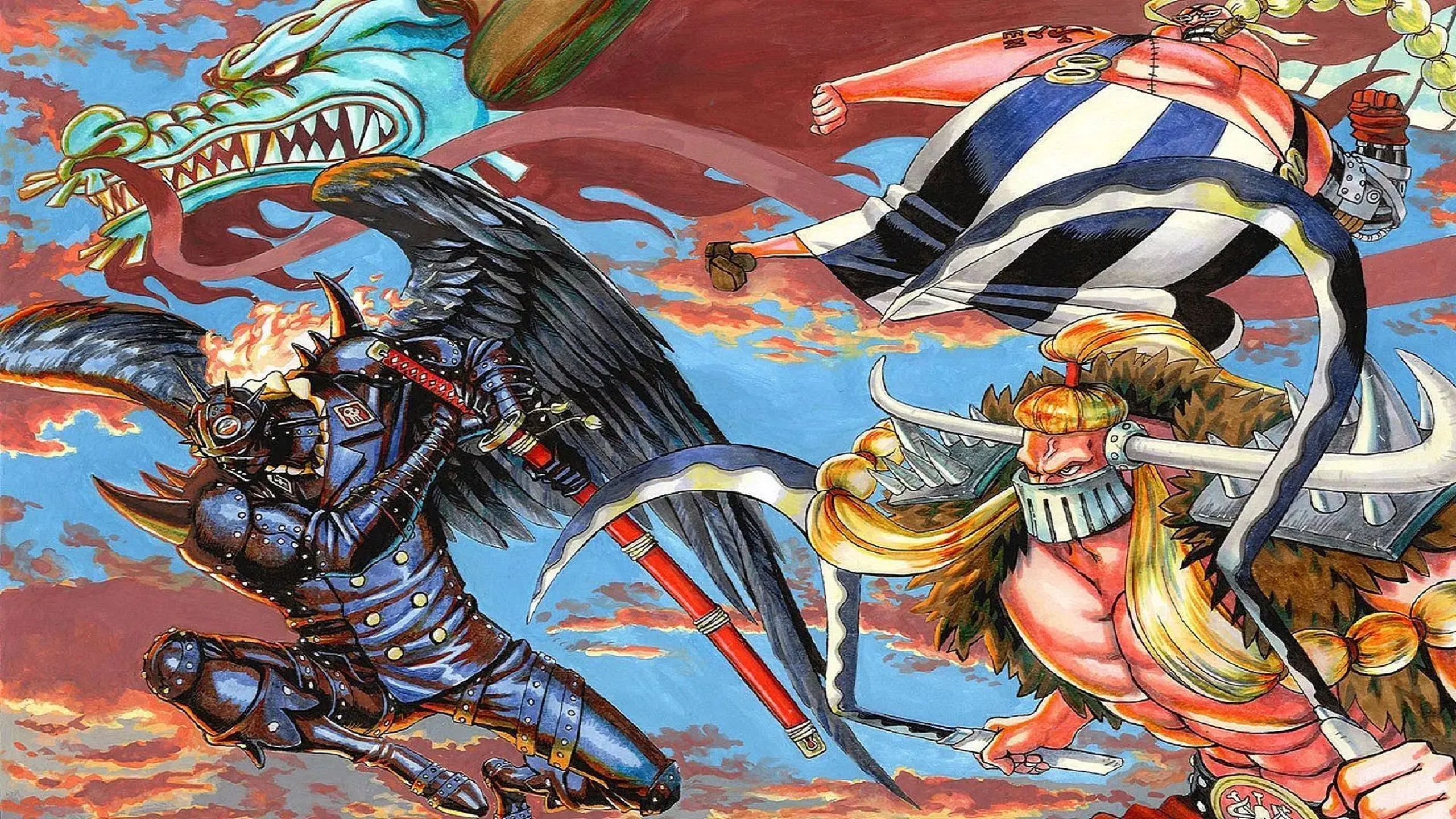Eiichiro Oda’s One Piece has long been celebrated as one of the most immersive and intricately built fictional worlds in anime and manga.
A significant factor in its attracting the allure lies in its masterful worldbuilding. Oda has created a universe so expansive and layered that every island, sea, and character feels alive, distinct, and interwoven with the overarching narrative.
Central to this immersive worldbuilding is the clever use of rumors and hearsay. These tools are more than just narrative devices; they form the backbone of storytelling in One Piece.
In a vast world where characters are often separated by great distances and rarely meet face-to-face, information travels through fragmented accounts.

This reliance on incomplete or unreliable information shapes the perceptions of both characters and fans, influencing how events unfold and how the world is understood.
Oda’s reliance on this narrative device not only drives the intrigue of the series but also makes it a study in the power of perception versus reality.
The role of rumors extends beyond the main series and is further explored in its spinoffs, such as the Ace novels and One Piece: Fan Letter.
These works jump deeper into how hearsay shapes character dynamics and world events, showcasing how perception often overrides objective truth in Oda’s fictional universe.
The Role of Rumors in One Piece’s Worldbuilding
One of the hallmarks of Eiichiro Oda’s storytelling is his frequent use of phrases such as “he said,” “she said,” “they say,” and “I heard.”
These phrases reflect the fundamental structure of the One Piece world, where information often spreads second-hand or even third-hand, creating an atmosphere of mystery and uncertainty.
In a universe as vast as One Piece, where the seas are seemingly endless and characters are scattered across islands separated by treacherous waters, direct communication is rare.
As a result, rumors, stories, and legends play a pivotal role in shaping the perception of events, individuals, and groups.
This approach is more than a clever narrative technique; it is a reflection of the world Oda has built. In this expansive universe, no single person or entity has a complete grasp of the truth.

Even powerful organizations like the World Government or the Marines operate based on partial or biased information.
This dynamic creates an environment where rumors and hearsay thrive, shaping the actions and decisions of both major and minor players in the story.
The spreading of rumors also serves to enrich the world’s lore. Characters are not just defined by their actions but by how those actions are perceived and retold by others.
For instance, Monkey D. Luffy’s reputation as an unpredictable and formidable pirate grows as much from his direct exploits as from the exaggerated or embellished tales that follow in his wake.
These narratives, often colored by the perspectives of those who share them, add depth to the storytelling and make the world feel more alive and interconnected.
Exploring Rumors Through the Ace Novels
The Ace novels, which provide a deeper look into the life and adventures of Portgas D. Ace, offer a prime example of how rumors influence the world of One Piece.
As Ace sails the Grand Line in pursuit of his dreams and builds his reputation as a pirate, the stories that circulate about him often shape how he is perceived by others.
These stories, which are frequently based on hearsay rather than direct observation, highlight the role of rumors in shaping both individual identities and broader world events.
In these novels, Ace encounters a wide variety of individuals, each with their own perspectives and interpretations of the world around them.
These characters often share their own versions of events, blending fact with fiction and creating a drapes of interconnected narratives.

Through these interactions, readers gain insight into how the spread of information or misinformation affects the actions and decisions of characters in the One Piece world.
For example, Ace’s growing infamy as a pirate is fueled not only by his actual deeds but also by the tales that spread in his wake.
These tales, often exaggerated or distorted, contribute to his reputation as a formidable and unpredictable figure.
This phenomenon underscores a central theme of One Piece: that perception is as powerful as reality, and in some cases, even more so.
The Ace novels also explore how rumors can influence the decisions of both allies and adversaries.
Pirates, marines, and civilians alike must steer across a world where the truth is often obscured by layers of speculation and falsehoods.
This dynamic creates a rich and unpredictable narrative world, where characters must rely on their instincts and judgment to separate fact from fiction.
The Influence of Rumors in One Piece Fan Letter
Another spinoff that jumps into the power of rumors is One Piece: Fan Letter. This story centers on a young girl who admires Nami, the skilled navigator of the Straw Hat Pirates.
Through her perspective, readers gain a deeper understanding of how rumors and hearsay shape the way people perceive the Straw Hats and their adventures.
The girl’s admiration for Nami is based entirely on second-hand accounts, emphasizing how characters in the One Piece universe are often defined by the stories told about them rather than by direct interactions.
In Fan Letter, the spread of information is depicted as both a unifying and divisive force. On one hand, it allows people from distant corners of the world to feel connected to the Straw Hats and their exploits.
On the other hand, it creates misunderstandings and misconceptions that can lead to conflict or confusion.

The story highlights the dual nature of rumors: they can inspire admiration and loyalty, but they can also sow discord and mistrust.
The spinoff also emphasizes the uncertainty that often accompanies the spread of rumors.
Characters frequently question the accuracy of the information they receive, reflecting the broader theme of how truth is often elusive in the One Piece world.
This uncertainty adds a layer of complexity to the storytelling, encouraging readers to think critically about the nature of information and its role in shaping perceptions.
Beast Pirates and the Power of Speculation
One of the most striking examples of Oda’s use of rumors in the main series is the depiction of the Beast Pirates, the fearsome crew led by Kaido.
When the silhouettes of the Beast Pirates were first introduced, they sparked widespread speculation among fans and characters alike.
Many assumed that the crew consisted entirely of Zoan Devil Fruit users, given their imposing and animalistic appearances.
This assumption, fueled by incomplete information, quickly spread and became a widely accepted belief.
As the story progressed, however, it became clear that this assumption was only partially true.
While the Beast Pirates did include some Zoan users, the majority of the crew was composed of failed SMILE fruit users or individuals awaiting the chance to acquire a Devil Fruit.
This revelation highlighted how rumors and speculation can lead to distorted perceptions, both within the One Piece universe and among its audience.

Oda’s handling of the Beast Pirates exemplifies his ability to use rumors and hearsay to create intrigue and subvert expectations.
By presenting information through the lens of speculation and incomplete knowledge, he keeps readers engaged and encourages them to question their assumptions.
This narrative strategy also reinforces the idea that in a world as vast and complex as One Piece, truth is often obscured by the fog of rumor and perception.
Thematic Significance of Rumors in One Piece
The use of rumors in One Piece is not merely a narrative device; it is a reflection of the series’ broader themes. At its core, One Piece is a story about freedom, individuality, and the pursuit of dreams.
The spread of rumors and hearsay mirrors the unpredictable and ever-changing nature of the world Oda has created.
Just as characters must steer across the physical challenges of the Grand Line, they must also contend with the complexities of a world where truth and fiction are often indistinguishable.
This theme is particularly relevant to the series’ exploration of identity and legacy. Characters in One Piece are frequently defined by the stories told about them, whether they are accurate or not.

For example, Monkey D. Luffy’s reputation as a fearless and formidable pirate is shaped as much by the rumors surrounding him as by his actual actions.
These narratives, which often take on a life of their own, contribute to the Melting pot of the One Piece world and add depth to its characters.
How Rumors Enhance Storytelling in One Piece
By emphasizing the role of rumors and hearsay, Oda creates a narrative world that is both dynamic and immersive.
The spread of information or misinformation adds layers of complexity to the storytelling, creating a world that feels alive and constantly in motion.
This approach also mirrors real-world dynamics, where information is rarely complete or entirely reliable, and people must make decisions based on incomplete or conflicting accounts.
The emphasis on rumors also serves to heighten the sense of mystery and intrigue that defines One Piece.
By presenting information through the lens of hearsay and speculation, Oda keeps readers on their toes and encourages them to question their assumptions.
This narrative strategy not only adds depth to the storytelling but also fosters a sense of engagement and curiosity among fans.
The role of rumors and hearsay in One Piece is a testament to Eiichiro Oda’s unparalleled skill as a storyteller.
From the main series to its spinoffs like the Ace novels and One Piece: Fan Letter, this narrative element is integral to the world Oda has built.

By embracing the uncertainty and complexity of information, he creates a universe that feels vast, interconnected, and alive.
Through his use of rumors, Oda not only adds depth to his storytelling but also challenges readers to engage with the narrative on a deeper level.
He invites us to consider the power of perception, the nature of truth, and the ways in which information shapes our understanding of the world.
As fans continue to explore the boundless seas of One Piece, the role of rumors will remain a central and compelling aspect of this legendary series.














